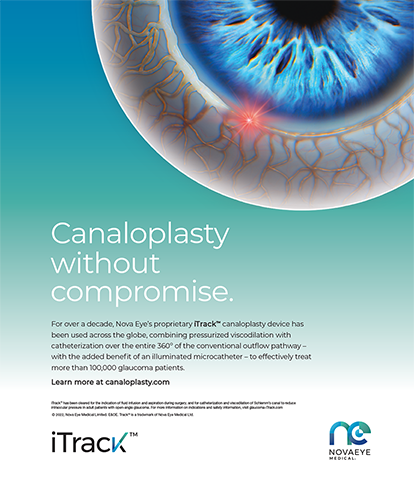

There are two main goals of an investigational device clinical trial in cataract and refractive surgery: to prove the device is (1) effective and (2) safe. What is a device to a cataract surgeon if it is effective but not safe or vice versa? Although achieving both criteria is pivotal to regulatory clearance/approval, the safety of the study subjects during the investigation and the safety of patients once the device is on the market are of the greatest importance. All study personnel must diligently assess clinical outcomes and carefully document and report information related to adverse events.
ADVERSE EVENTS VERSUS ADVERSE DEVICE EFFECTS: WHAT IS THE DIFFERENCE?
During a study of any investigational product, it is important to identify as quickly as possible any complications the product may be causing among study participants. In the context of a clinical trial, any unfavorable and unintended medical occurrence in a subject is considered an adverse event.1 This could range from something as simple as tripping and bruising a knee during a study visit to something far more serious. How adverse events are reported and tracked in order to determine their relationship to the product differs between studies of drugs and devices.
In investigational device studies, adverse events that are determined to be caused by or associated with the device being studied are considered adverse device effects (ADEs). It is up to the investigator to make this determination. For example, a study protocol may require the investigator to come to one of four conclusions: that the adverse event is definitely, probably, or possibly related or that it is unrelated to the device (see Adverse Device Effects). Although, typically, all adverse events are tracked over the course of the study, special attention must be paid to adverse events that are at least possibly related to the device.
ADVERSE DEVICE EFFECTS
Definite
A causal relationship with the study device is clear-cut, and there is no other possible cause.
Probable
A causal relationship with the study device is likely, although alternate etiologies are also possible.
Possible
A causal relationship with the study device is not definite, and alternate etiologies are also possible.
Not related
The adverse event has no causal relationship with the study device, and/or there is evidence of alternate etiology such as concurrent medication or illness.
EVALUATING ADEs
Included in each study protocol should be a description of the process, which may vary from one trial to the next, for documenting and monitoring adverse events. It should also describe the responsibilities of the investigator and study sponsor with regard to informing each other, governing institutional review boards (IRBs), and relevant regulatory bodies based on the location of the clinical study sites. To avoid confusion on reporting procedures, the principal investigator and study coordinator should meet with the sponsor to review the information, which will then need to be relayed to all study staff.
When evaluating an ADE (which, by definition, has already been determined to be related to the device), the investigator must consider whether he or she feels that it was “unanticipated.” An ADE would be considered unanticipated if it had a major impact on the study participants’ safety or health or if it resulted in a life-threatening problem or death and if it were not known to be a risk of the device.2 Known or foreseeable device risks are described in study-related documents such as the IRB-approved protocol and informed consent form.3 If the effect was not mentioned in these documents or if it was mentioned but it occurred with a different nature, severity, or degree of incidence, then it would be considered unanticipated. An unanticipated adverse device effect (UADE) is an important occurrence in a clinical trial. It should be noted that a serious unexpected problem pertaining to the welfare, rights, or safety of study participants would also be categorized as a UADE.3
UADE REPORTING
The sponsor, IRBs, and regulatory agencies all use safety information to make critical decisions that may have a significant impact on the clinical trial and the investigational device. Although most sponsors and IRBs have specific adverse event reporting requirements, reporting and evaluating UADEs in a timely fashion are critical for protecting study participants. An investigator is required to submit a report of a UADE to his or her IRB and the sponsor within 10 days of when the investigator became aware of the event,3 although, ideally, this should be done as soon as possible. The sponsor must immediately evaluate the reported UADE, while taking into consideration analyses of other occurrences of the same or similar events. The results of this evaluation must then be reported to the appropriate regulatory authorities, all reviewing IRBs, and all investigators participating in the study within 10 days of the sponsor’s becoming aware of the event.3
CONCLUSION
Although it is important for an investigator to monitor all activity that relates to the safety and well-being of study participants, special attention must be paid to occurrences that are at least possibly related to an investigational device. If a UADE occurs at one site, timely reporting ensures that all other key players involved in the study are made aware of the UADE so that all study participants are afforded optimal protection. n
1. Guidance for clinical investigators, sponsors, and IRBs: adverse event reporting to IRBs — improving human subject protection. US Food and Drug Administration. http://www.fda.gov/downloads/RegulatoryInformation/Guidances/ucm126572.pdf. Accessed April 27, 2015.
2. Code of Federal Regulations Title 21. Sec. 812.3 Definitions. US Food and Drug Administration. http://www.accessdata.fda.gov/scripts/cdrh/cfdocs/cfcfr/CFRSearch.cfm?fr=812.3 Revised April 1, 2014. Accessed April 27, 2015.
3. Code of Federal Regulations Title 21. Sec. 812.150 Reports. http://www.accessdata.fda.gov/scripts/cdrh/cfdocs/cfcfr/CFRSearch.cfm?fr=812.150 Revised April 1, 2014. Accessed April 27, 2015.
Section Editor Ryan Bouchard
• director of medical devices at Ora
• (978) 332-9574; rbouchard@oraclinical.com
Juli Chalifour
• clinical project manager at Ora


